News
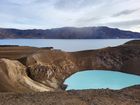
The uplift in Askja has slowed down
There is evidence of recent changes in the deformation data (cGNSS) around Askja. The deformation rate has decreased since the beginning of August and the signal has flattened at several stations within or around the caldera. At this stage it is uncertain what process is causing this pressure reduction, possibly the source of the inflation has been shut off or it could be related to an outflow of magmatic fluids.
Read more
Flood in Skaftá
Updated on 29 August, at 17:00
Hydrological measurements in Skaftá at Sveinstindur show that the increase in discharge has slowed down.The discharge is estimated 620 m3/s at 15:00 compared to 600 m3/s at 9:00 this morning.
Read more
No visible changes in geothermal activity around Askja and Víti
The field trip conducted by a team from IMO last week has been completed succesfully.
Preliminary results indicate no
changes in the gases or waters compared to previous years while
further sample and data analyses are ongoing. Visual inspections
and temperature and pH measurements do not point to
any clear changes in geothermal activity around Askja including
in Víti. The observation on 12 August at the edge of
Bátnshraun which was reported as a possible steam plume is now recognized
as dust caused by a minor rock fall on a steep slope of the
caldera wall.
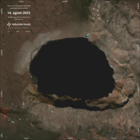
The situation at Askja remains unchanged
The latest deformation data indicates that the inflation continues at Askja with the position and depth of the inferred magma source unchanged since September 2021. The magma is accumulating at a depth of about 3 km, and there are currently no indications from geodetic observations that the magma has shallowed further. Ten days have passed since last activity was seen in the crater close to Litli-Hrútur and since volcanic tremor reached its background level. No deformation is detected in the area and the seismic activity has decreased significantly.
Read more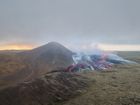
The activity in the Reykjanes Peninsula has entered a new phase
Updated 10 August 2023
The Icelandic Met Office has updated the hazard map for the eruption site. The vicinity of the eruption area is still dangerous. High temperatures characterize the lava field. The solidified crust can be very thin in places with very hot and molten lava underneath. The edges of the new lava field are unstable and large chunks of lava can fall sudden. As a result of past activity there are fractures in the area that pose danger. The new lava continues degassing and hazardous gases can collect in depressions
Read more
Earthquakes in Mýrdalsjökull
There has been increased earthquake activity around Katla the past few days. An earthquake sequence started shortly after midnight 30. June. By 6:30 in the morning, 95 earthquakes had been detected, 8 over M3 and the largest was M4.4. The earthquake activity in Mýrdalsjökull the past weeks has been the most that has been measured there since fall 2016. Unusually high electrical conductivity for this time of year has been measured in Múlakvísl. Gases associated with geothermal waters have been measured at Láguhvolar. The measurements suggest elevated geothermal activity as the cause of the observed changes but it is not possible to exclude the possibility of magma movements.
Read moreNo changes in activity seen at Grímsvötn
Since the beginning of the year around 10 to 30 earthquakes (> M1.0) have been detected each month in Grímsvötn.
The end of April – the beginning of May were the most active periods
with the largest earthquake of this year so far was a M3.3 on the 23.
April. Since the middle of May the seismic activity has decreased.
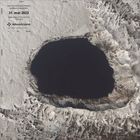
Askja volcano continues to inflate at a steady rate and there is currently no indication of an escalation in activity

No clear signs of an increase in activity at Askja
Seismic activity around Askja increased in August 2021 as uplift, most likely caused by a magmatic intrusion, began. The seismic activity was more elevated in November and December 2021 and has since the start of 2022 remained steady. At the same time, the uplift has continued at a very stable rate since the beginning of the unrest.
Read moreThe weather in Iceland in 2022
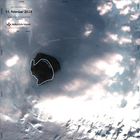
The ice covering the lake in Askja is melting
Recent
satellite images show that the ice covering Askja lake has been retreating
significantly in the past week. Thisis quite unusual so early
in the year, normally it occurs in the summer time between June and July. A similar
event was recorded in 2012 when the ice in Askja lake started to melt in March. The reason why the ice covering the Askja lake has retreated
so much in the past days is still uncertain and no direct measurements are
currently available to fully understand the causes. However, few causes have been considered.
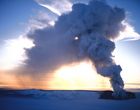
New project on effects of climate change induced ice-retreat on seismic and volcanic activity
Retreating ice caps
have a large influence on the crust of the Earth and cause ground uplift – a
rebound effect resulting from unloading of the glaciers due to ice loss. Dr. Michelle Maree Parks, a specialist
in volcano deformation studies at the Icelandic Meteorological Office, together
with Freysteinn Sigmundsson, a geophysicist at the Nordic Volcanological Center
at the Institute of Earth Sciences, University of Iceland, lead a project that
received a grant-of-excellent from the Icelandic Research Fund that addresses
these questions. They will together form a large international team of
scientists to carry out research on glacial isostatic adjustment due to present
day glacier change and its effect on the Earth‘s crust, in particular at four
volcanic systems and two seismic zones in Iceland.



